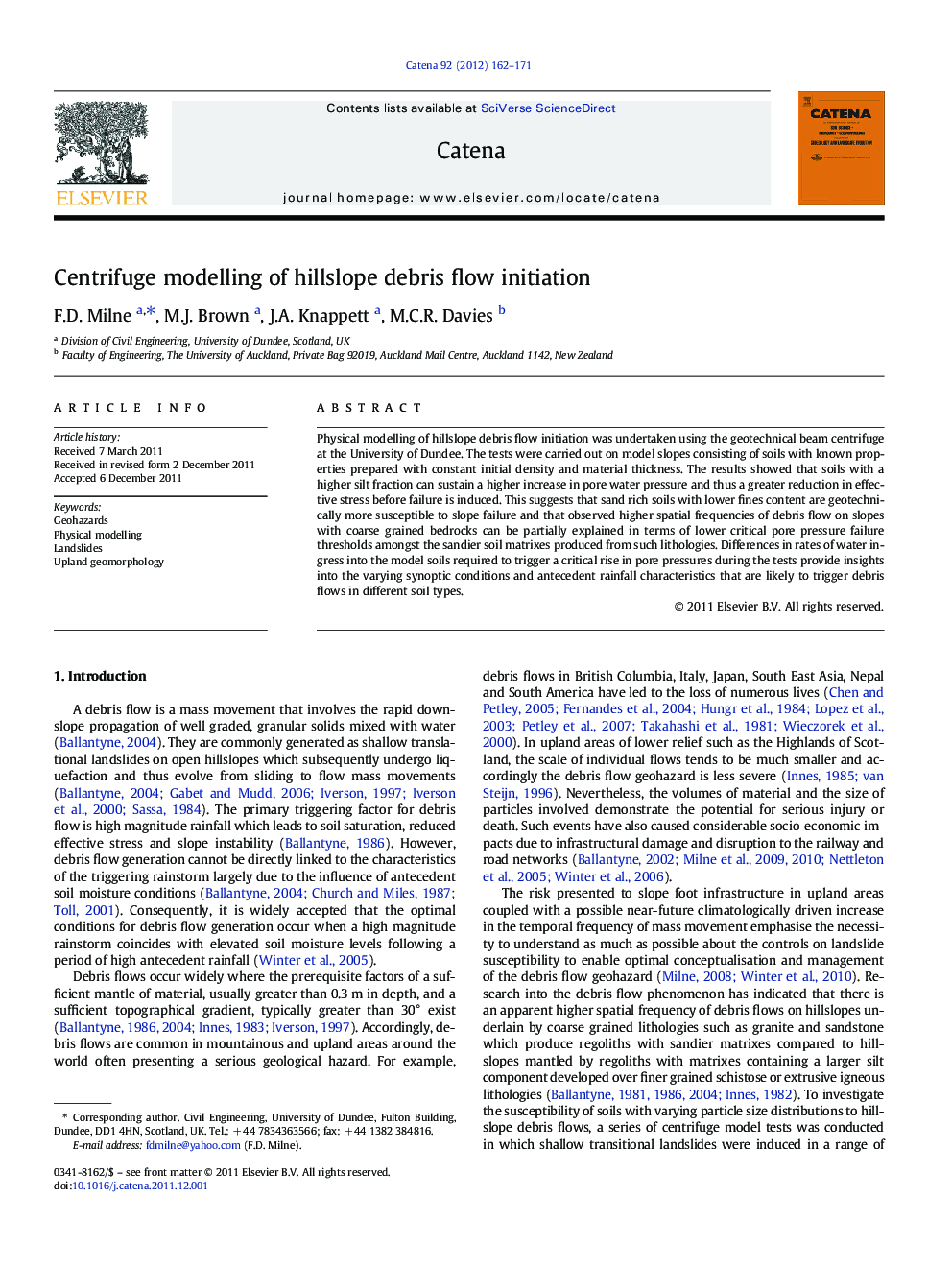| Article ID | Journal | Published Year | Pages | File Type |
|---|---|---|---|---|
| 4571899 | CATENA | 2012 | 10 Pages |
Physical modelling of hillslope debris flow initiation was undertaken using the geotechnical beam centrifuge at the University of Dundee. The tests were carried out on model slopes consisting of soils with known properties prepared with constant initial density and material thickness. The results showed that soils with a higher silt fraction can sustain a higher increase in pore water pressure and thus a greater reduction in effective stress before failure is induced. This suggests that sand rich soils with lower fines content are geotechnically more susceptible to slope failure and that observed higher spatial frequencies of debris flow on slopes with coarse grained bedrocks can be partially explained in terms of lower critical pore pressure failure thresholds amongst the sandier soil matrixes produced from such lithologies. Differences in rates of water ingress into the model soils required to trigger a critical rise in pore pressures during the tests provide insights into the varying synoptic conditions and antecedent rainfall characteristics that are likely to trigger debris flows in different soil types.
► Geotechnical beam centrifuge modelling of hillslope debris flow initiation. ► Model slope soils have constant density and thickness, varying grain size distribution. ► Sand soils with lower fines content are geotechnically more prone to slope failure. ► Different rainfall characteristics are likely to trigger debris flow in different soils.
